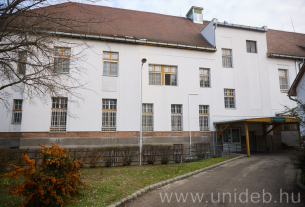The new isotope treatment, which has so far been used in only a few European institutes, is already available at the Clinical Center of the University of Debrecen. With the new procedure, a patient with a neuroendocrine tumor was treated for the first time in Debrecen on 12 May.
Neuroendocrine tumors are tumorous lesions from neuroendocrine cells found in many places in the body, most commonly in the gastrointestinal tract and pancreas, and in the mucous membranes of the bronchial system, but can occur in almost all organs. If the tumor can no longer be removed with surgery, it can usually be treated effectively with special medications. However, for late-onset metastatic tumors, isotope therapy may be an effective treatment.
The cells in this tumor contain a special protein that is absent or present in very small amounts on healthy, non-tumor cells. During treatment, the patient receives 177Lu-oxodotreotide, which binds to only one of these proteins, such as tumor cells, and the excess is excreted in the urine. The composition contains a radioactive substance that reduces or destroys the tumor and its metastases by local radiation after binding. With the new procedure, the lives of patients can be significantly extended – explained Endre Nagy, Professor of the Department of Internal Medicine at the Clinical Center of the University of Debrecen, with hirek.unideb.hu.
So far, only a few types of endocrine cancers can be treated this way, but research is underway around the world with additional drugs.
The treatment requires a special background, instrumentation, and expertise, which is available in only a few centers in Hungary. Following the infusion, SPECT / CT is used to check that the tumor has taken up the therapeutic agent. For the duration of treatment, the patient is isolated in accordance with radiation protection regulations. The therapy can be repeated, a series is usually given every 8 weeks, it consists of a total of 4 treatments – informed Ildikó Garai, associate professor of the Department of Nuclear Medicine, Institute of Medical Imaging, DE MSc.
The new procedure was first applied in Hungary at the Clinical Center of the University of Debrecen and at the University of Semmelweis on 12 May. Hungarian patients have so far been sent by Hungarian endocrinologists and oncologists to foreign centers, mainly to Basel, Switzerland, as treatment was available in only a few European centers.
In the last 5 years, the four Hungarian medical training universities have jointly created the conditions for this therapy, which is now available to Hungarian patients.
debreceninap.hu
Photo: unideb.hu


















